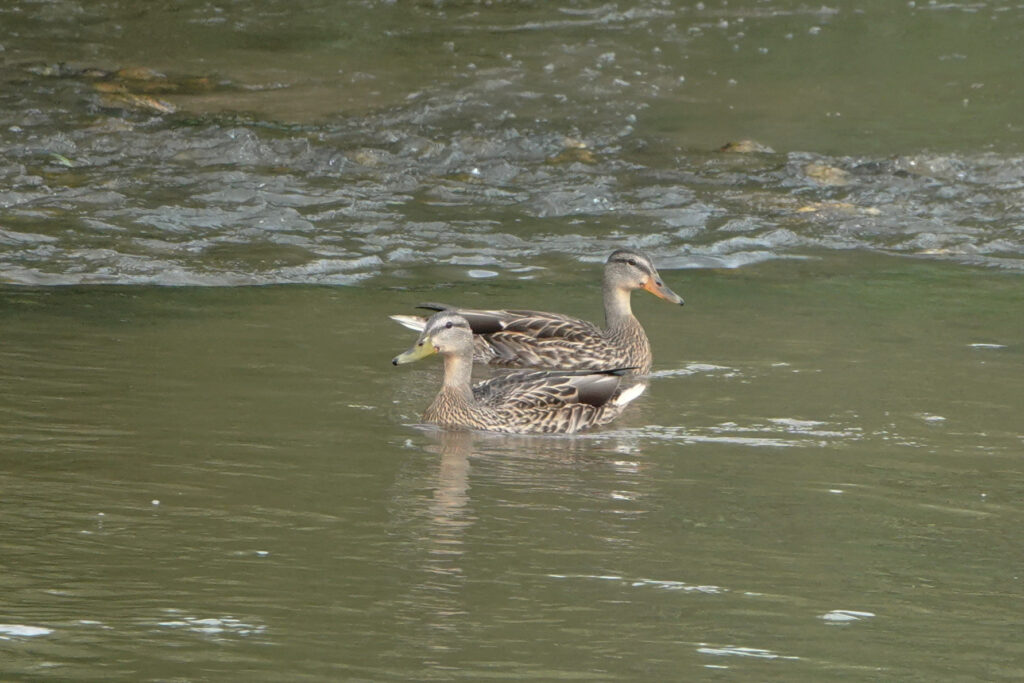
Mallards, like many other waterfowl species, molt after the breeding season. Males molt into what is called an eclipse plumage, a plumage where they drop their bright colored feathers, including their signature green head. They replace them with more cryptically colored feathers, much like the female of the species. This molt is also describe as “catastrophic” meaning they molt so many of their flight feathers that it renders them essentially flightless. Male mallards have the protection of water so they can remain safe in this flightless stage. You can see from the image above that both of these mallards, a male and a female, look almost identical. The greatest difference is with their bill coloration. Drake mallards have a bright yellow bill in their alternate (or breeding) plumage and a duller yellow-green bill in basic plumage. Females always have an orange bill with a dark patina. Hatching year mallards show brown outer tail feathers, where the pictured birds have the white outer tail feathers of adults.